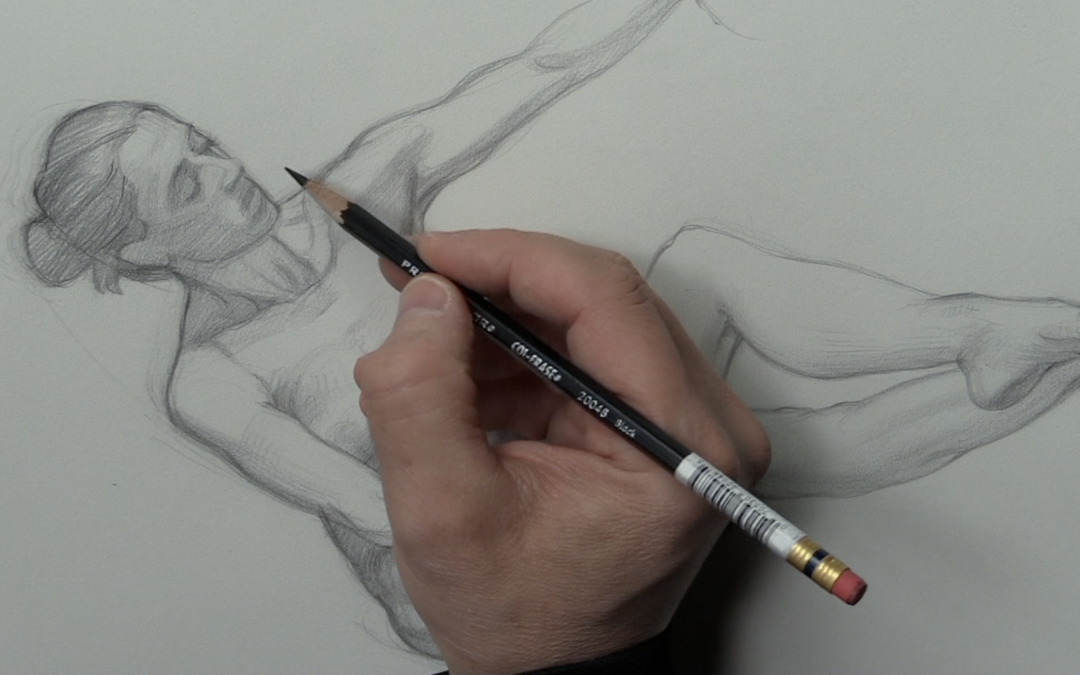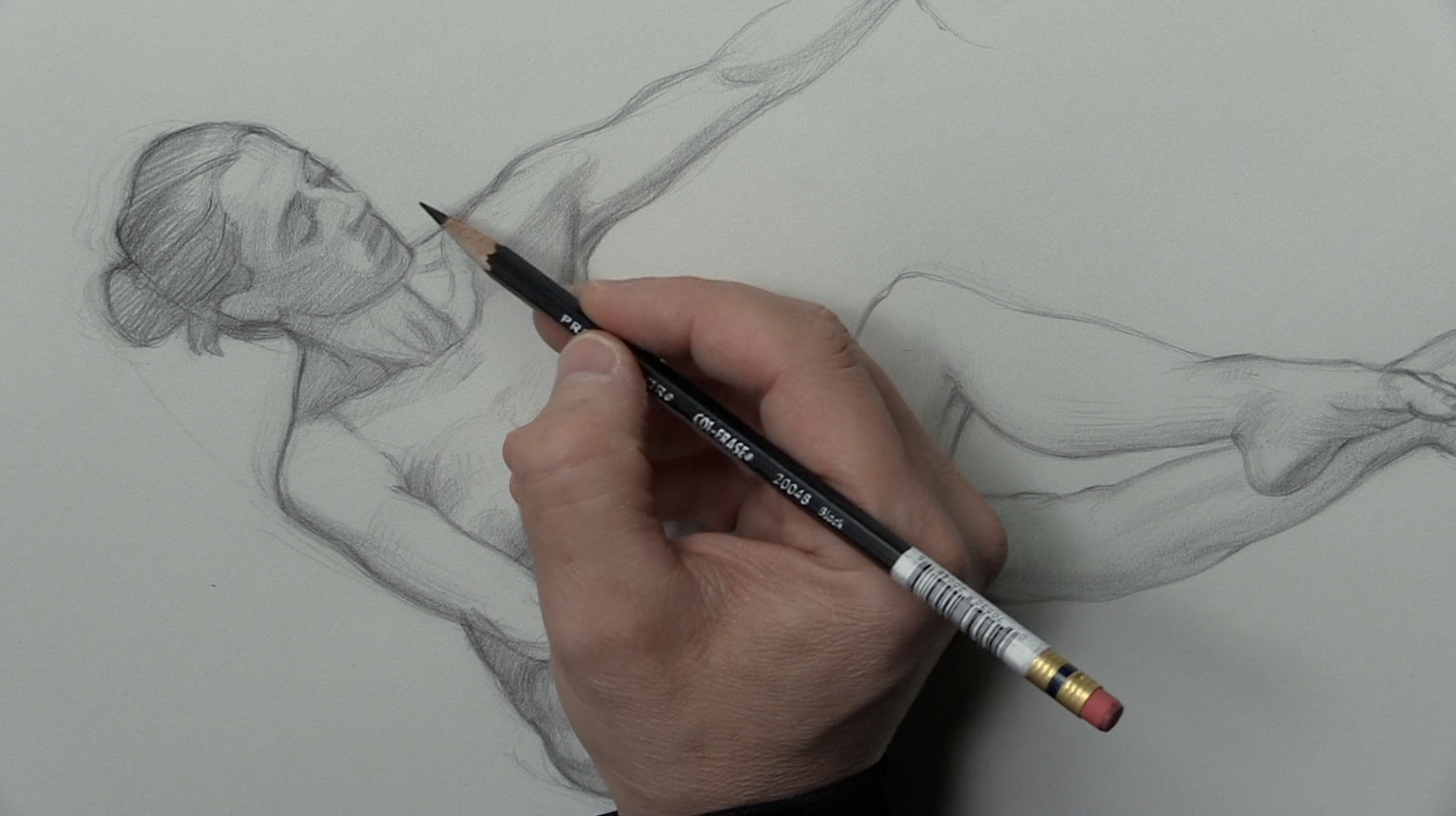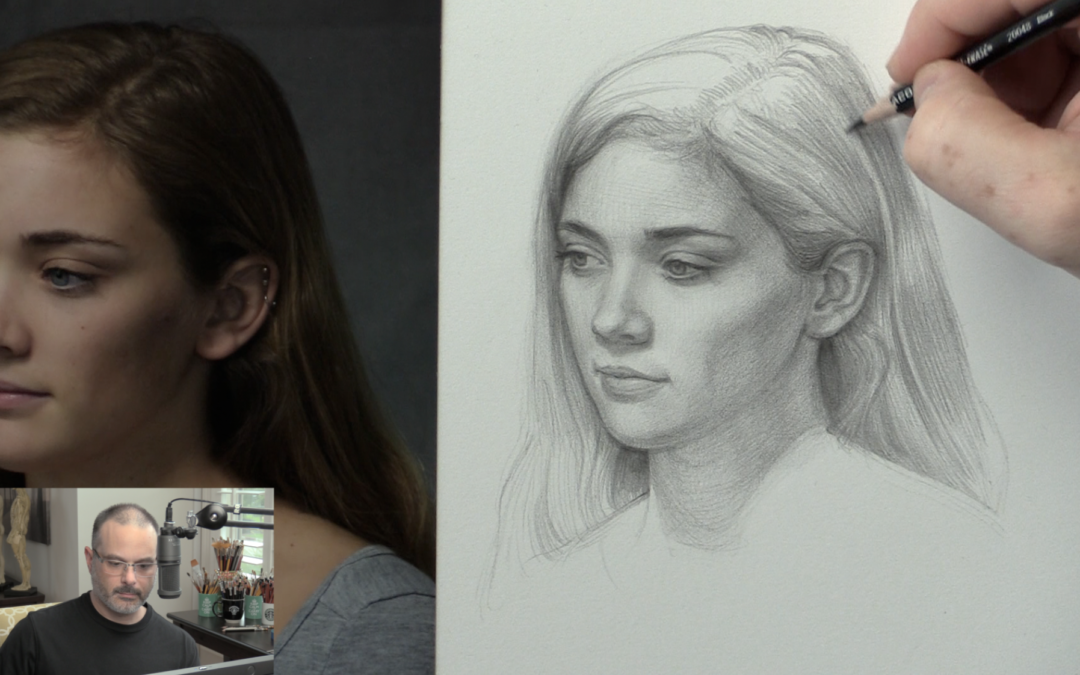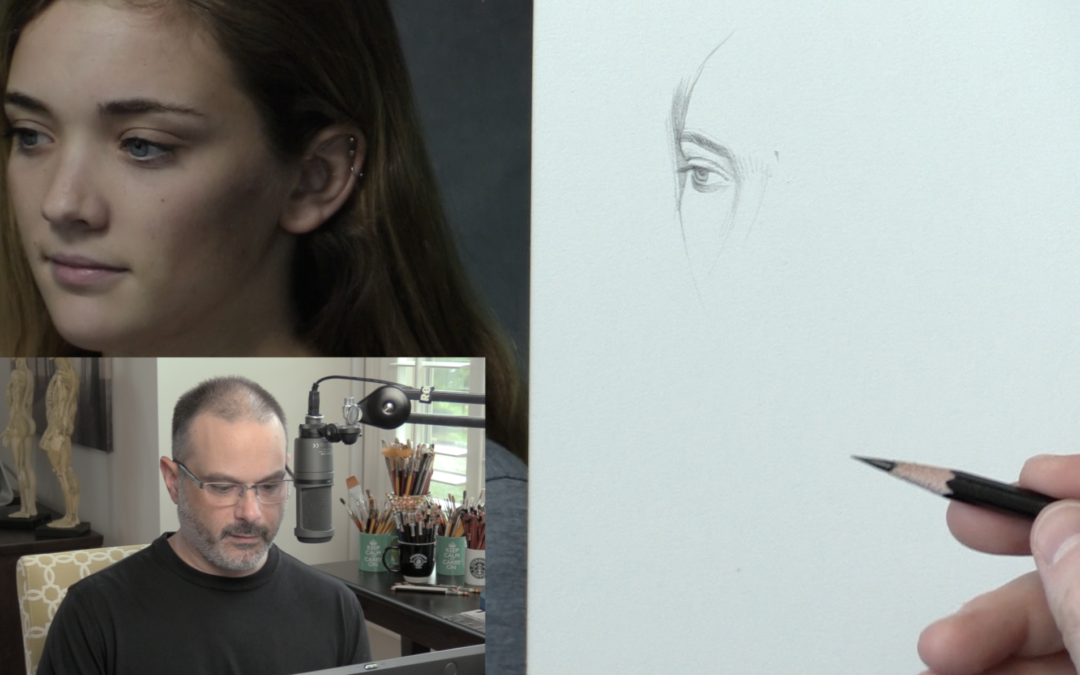
Drawing A Small Portrait
Have you ever worked on a figure drawing where the head was really small? Did you ask yourself, how am I supposed to draw so small? The eye is the size of my pencil point.
I’ve been there too, many times. What I have learned over the years of painting smaller portraits on book covers is that shadow shapes are your best friend.
You really do not want to start outlining little details like the bottom of the nose or say the eye lashes. You first want to block in shapes of shadow. Then you can gradually build up some softer tonal shifts to resolve the features. As you progress you can then start to use some crisper line.
Now I completely understand not every artist works with tone. If this is the case you’ll still want to draw shapes first, not features. If you work with line only you do not have to shade in these shapes.
The key takeaway from this short video, use light and shade to your advantage when drawing small. Also less is best. With a smaller portrait you have to know when to stop. Adding too much detail can take you down a road of heartache.
If you are interesting in learning more, you can check out the full course within the members area of Drawing Tutorials Online. Consider signing up to DTO. You will immediately gain access to all of our comprehensive course listing.









